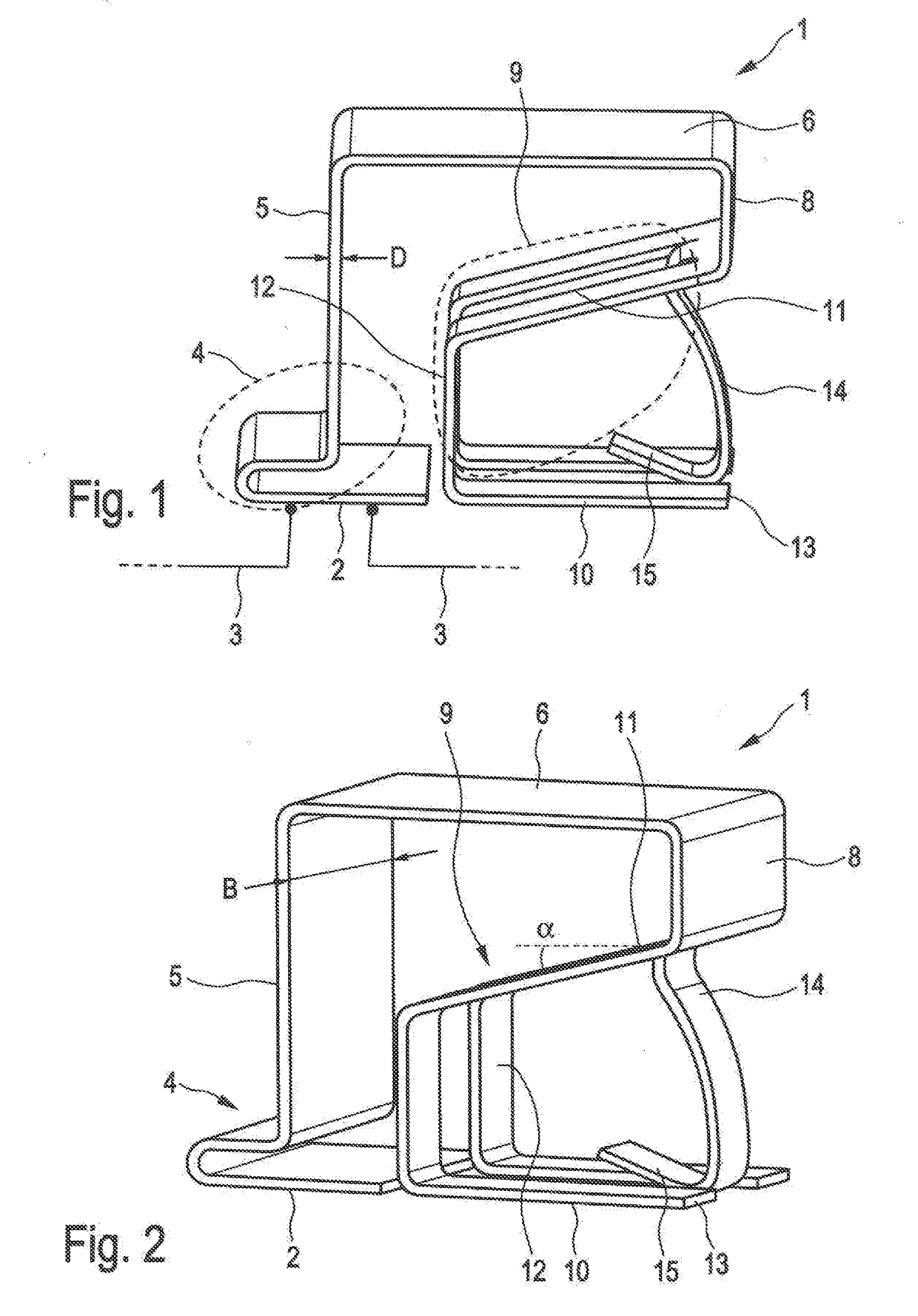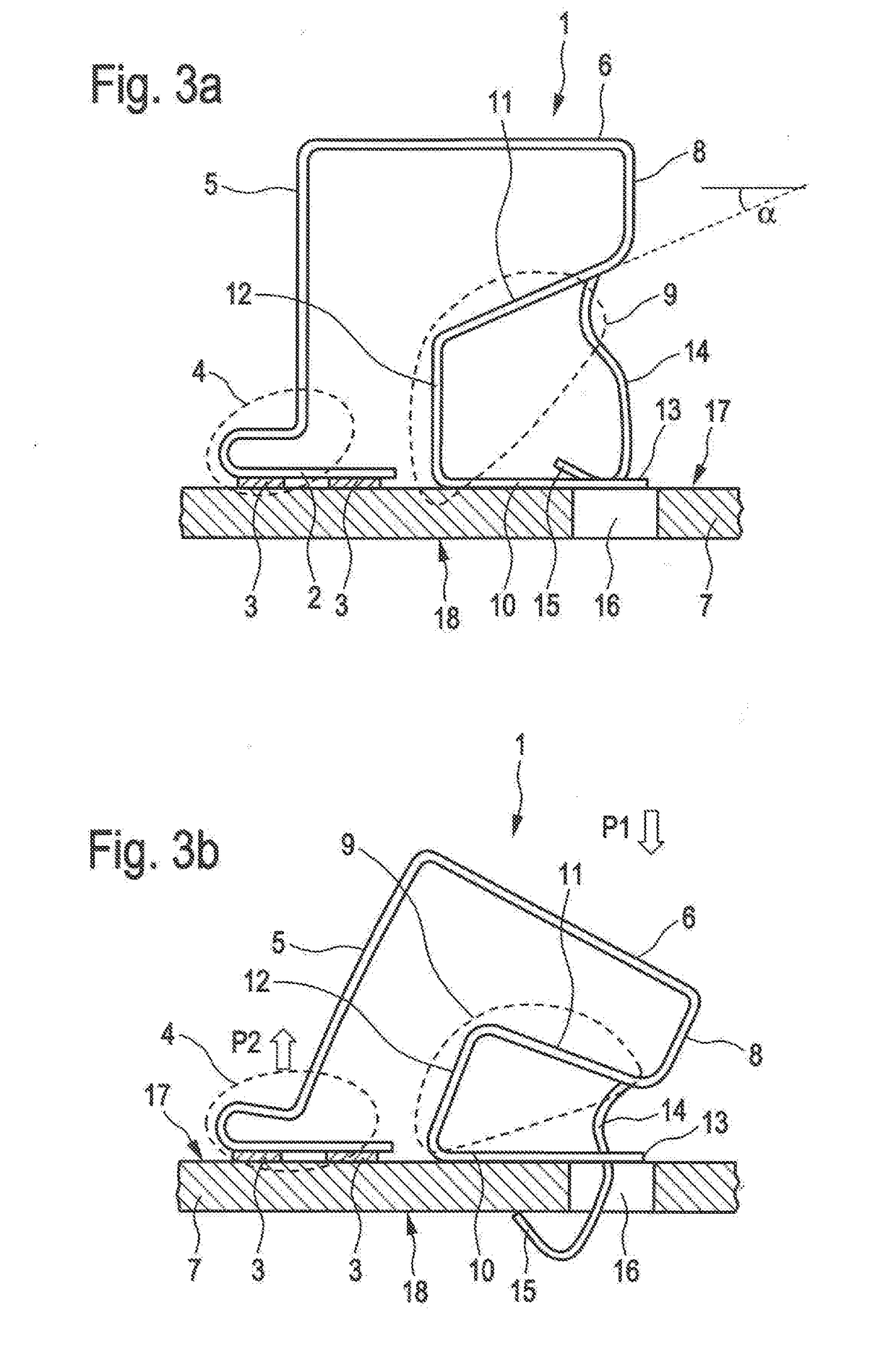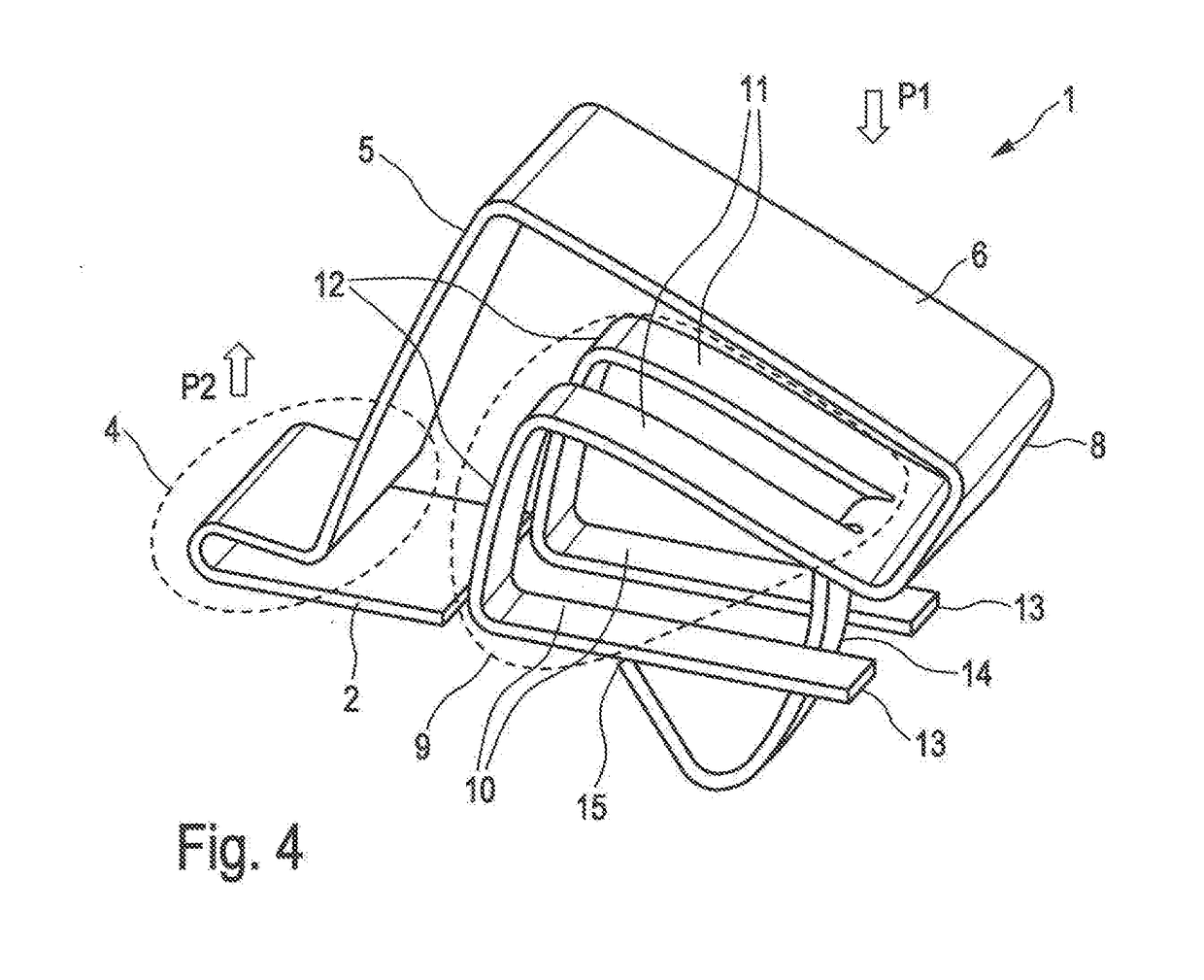Fuse element
a fuse element and element technology, applied in the direction of printed circuit aspects, heating/cooling contact switches, electrical equipment, etc., can solve the problems of unable to ensure cannot define with certainty the remaining elastic force, and cannot guarantee whether the electrical circuit is interrupted, so as to achieve reliable fastening of the fuse element, sufficient elastic force, and simple assembly
- Summary
- Abstract
- Description
- Claims
- Application Information
AI Technical Summary
Benefits of technology
Problems solved by technology
Method used
Image
Examples
example embodiment
[0042]The basic structure of the fuse element according to the present invention shall be described hereinafter in connection with the representations in FIGS. 1 and 2 by way of an example embodiment. The further FIGS. 3a, 3b and 4 illustrate the arrangement of the fuse element prior to and after mounting on a circuit board 7 according to a deformed and thus operative state. The fuse element 1 thus can be disposed on the circuit board 7.
[0043]According to the representation in FIGS. 1 and 2, preferably the fuse element 1 is formed integrally of a strip of a metallic and especially a solderable material. The material offers the possibility of plastic deformation and further also has sufficient elasticity. The fuse element 1 in the form shown in FIGS. 1 and 2 can be manufactured to the full extent and thus completely by means of appropriate machines. The shape of the fuse element 1 shown in FIGS. 1 and 2 is the shape achieved after complete manufacture or pre-fabrication and, resp., o...
PUM
 Login to View More
Login to View More Abstract
Description
Claims
Application Information
 Login to View More
Login to View More - R&D
- Intellectual Property
- Life Sciences
- Materials
- Tech Scout
- Unparalleled Data Quality
- Higher Quality Content
- 60% Fewer Hallucinations
Browse by: Latest US Patents, China's latest patents, Technical Efficacy Thesaurus, Application Domain, Technology Topic, Popular Technical Reports.
© 2025 PatSnap. All rights reserved.Legal|Privacy policy|Modern Slavery Act Transparency Statement|Sitemap|About US| Contact US: help@patsnap.com



